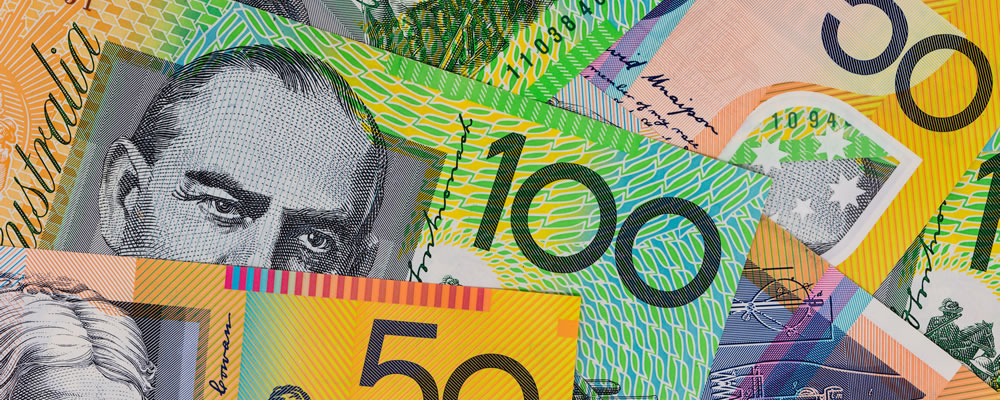Even though the outlook of the Eurozone economy remains less than encouraging the Euro to Australian Dollar exchange rate is recovering some ground at the start of the week.
- Weaker US payrolls report dented odds of imminent Fed rate hike – Increased risk appetite shored up the Australian Dollar
- German Services PMI disappointed expectations – Signs of softness continued to emerge from Eurozone’s powerhouse economy
- Suggestion of rising Australian inflation boosted AUD demand – Mixed domestic data overshadowed by improved inflationary measure
- RBA policy meeting boosted ‘Aussie’ – EUR AUD exchange rate weakness prompted as policymakers took less dovish outlook on interest rates
Australian Dollar Surges after RBA Remains on Hold
Demand for the ‘Aussie’ strengthened sharply after the Reserve Bank of Australia (RBA) opted to leave interest rates on hold once again. The less dovish tone of policymakers encouraged investors to pile back into the antipodean currency, particularly as the chances of a 2016 Fed rate hike remain lower.
As a result the EUR AUD exchange rate was trending lower around 1.4612 during Tuesday’s European session.
(Previously updated at 11:23 on 05/09/2016)
While the appeal of the Australian Dollar has withstood some mixed domestic data on Monday the antipodean currency has not been able to make gains against the Euro.
Australian Dollar (AUD) Boosted by Softer US Labour Market Data
Confidence in the Euro (EUR) has been generally muted in the wake of weaker-than-expected Eurozone inflation data, with investors increasingly concerned by the possibility of the European Central Bank (ECB) loosening monetary policy further. To that end Friday’s Producer Price Index for July did not offer any encouragement, with the measure slowing from 0.8% to 0.1% on the month. This suggested that inflationary pressure within the currency union is unlikely to pick back up in the near future; further evidence that the ECB’s raft of easing measures has failed to have a material impact on economic conditions.
The Euro to Australian Dollar (EUR AUD) exchange rate was also encouraged to trend lower ahead of the weekend on the back of the latest US Non-Farm Payrolls report. The headline figure showed disappointing growth of 151,000 and, accompanied by a lack of change in the Unemployment Rate, indicated that the labour market had failed to tighten further in August. This weaker showing discouraged bets that the Federal Reserve could raise interest rates imminently, something that gave the commodity-correlated Australian Dollar (AUD) a strong boost.
Weaker German Services PMI Failed to Weigh on Euro (EUR) Demand
Australian data proved somewhat mixed on Monday morning, provoking fresh volatility for the EUR AUD exchange rate. However, despite the August Services PMI discouragingly plunging from 53.9 to 45.0 it was not long before the ‘Aussie’ began to recover its steam. The appeal of the antipodean currency strengthened in response to an uptick in the TD Securities Inflation measure, which rose from 1.0% to 1.2% on the year. This indication of stronger inflationary pressure prompted investors to quickly pile back into the Australian Dollar, despite the seemingly mixed outlook of the domestic economy.
Even though the Euro recovered some ground at the start of the week it has struggled to hold onto its momentum. The finalised German Services PMI showed a significant downward revision from 53.3 to 51.7, prompting markets to sell out of the single currency once again. Some of the negative impact of the result was muted by stronger performances in Italy and France, as well as the fact that the sector remains solidly in growth territory despite its slowing. Nevertheless, with demand for the US Dollar (USD) still muted the EUR AUD exchange rate was able to trend higher, recovering some of its lost ground.
EUR AUD Exchange Rate Forecast: ‘Aussie’ Rally Predicted on Lack of RBA Rate Cut
While the ‘Aussie’ is likely to come under increasing pressure ahead of the Reserve Bank of Australia’s (RBA) September policy meeting any weakness is expected to be limited. Markets do not anticipate any particular changes at this juncture, with Bill Evans, Chief Economist at Westpac, noting that:
‘We are confident that there will be no move coming from this meeting. The more interesting issue is whether the Board cuts rates at its meeting on November 1. Since rates dropped below 3% in 2013 all six moves have been delivered in a ‘post CPI’ month. That is February, May, August, and November.’
Should policymakers give greater indication of a dovish bias for their next interest rate decision then the EUR AUD exchange rate could make stronger gains. However, if the tone of comments proves less downbeat then the Australian Dollar may see a solid rally in the wake of the announcement.
Investors will be interested to see the latest German Construction and Retail PMIs, meanwhile, for a greater gauge on the outlook of the Eurozone’s powerhouse economy. Should these measures also demonstrate signs of weakening then the appeal of the Euro is expected to diminish further, with the strength of the German economy remaining the primary driver of the Eurozone itself. A stronger showing, on the other hand, could sharply bolster demand for the single currency.
Current EUR, AUD Exchange Rates
At the time of writing, the Euro to Australian Dollar (EUR AUD) exchange rate was trending higher around 1.4706, while the Australian Dollar to Euro (AUD EUR) pairing was trending narrowly in the region of 0.6797.



